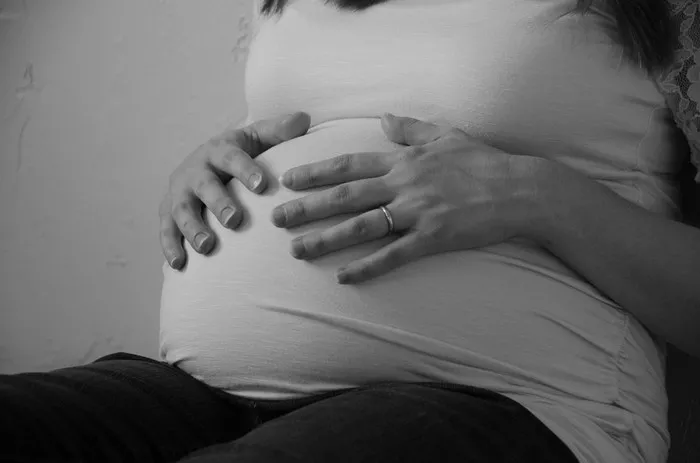Fibroids are non-cancerous growths that develop in the uterus. They are common in women of reproductive age, particularly those between 30 and 40 years old. While fibroids are often harmless, their location within the uterus can significantly affect how they impact a woman’s health. In some cases, the location of a fibroid can make it more dangerous and lead to serious health complications. Understanding which locations of fibroids pose greater risks can help women better manage their health and seek appropriate treatment when necessary.
What Are Fibroids?
Fibroids are made up of muscle and connective tissue, and they can vary greatly in size and location. Some women may have just one fibroid, while others may have multiple. Fibroids are categorized based on where they grow in the uterus. The most common locations include the subserosal, intramural, submucosal, and cervical areas. Each type can have different symptoms and complications, and some can be more dangerous than others.
Understanding the Different Types of Fibroids
Subserosal Fibroids
Subserosal fibroids develop on the outer wall of the uterus, facing the abdomen. These fibroids are typically not associated with heavy bleeding but can cause discomfort due to their size. They may press against the bladder, rectum, or other organs, leading to symptoms like pelvic pain or frequent urination.
While subserosal fibroids are often not considered dangerous, they can lead to complications if they grow large enough. In rare cases, they can cause twisting (torsion), which can cut off their blood supply and cause severe pain.
Intramural Fibroids
Intramural fibroids grow within the muscular wall of the uterus. These are the most common type of fibroids and may cause symptoms such as heavy menstrual bleeding, pelvic pain, and pressure on other organs. Because they are embedded in the uterine muscle, they can interfere with the normal contractions of the uterus, leading to longer and more painful periods.
Although intramural fibroids are usually not life-threatening, they can cause significant discomfort and disrupt a woman’s quality of life. In some cases, they may also interfere with fertility by blocking the fallopian tubes or affecting implantation.
Submucosal Fibroids
Submucosal fibroids are located just beneath the uterine lining (endometrium). These fibroids are often the most problematic due to their proximity to the uterine cavity. They can cause heavy menstrual bleeding, prolonged periods, and significant cramping. The bleeding associated with submucosal fibroids is often more severe than that of other fibroids.
Submucosal fibroids are also linked to fertility issues. They can alter the shape of the uterine cavity, making it more difficult for an embryo to implant. In some cases, they may even cause miscarriage. For this reason, submucosal fibroids are considered the most dangerous in terms of reproductive health.
Cervical Fibroids
Cervical fibroids develop in the cervix, the lower part of the uterus that connects to the vagina. These fibroids are less common than others but can be more dangerous. Depending on their size, cervical fibroids may obstruct the birth canal, making labor and delivery more complicated. They can cause pain during intercourse, urinary issues, and even pelvic pressure.
While cervical fibroids are less likely to cause heavy bleeding than other types, they can present significant challenges during pregnancy. In some cases, they may require surgical intervention or a cesarean section during delivery to avoid complications.
Which Fibroid Locations Pose the Greatest Risk?
While fibroids of any size or location can cause symptoms, certain locations carry a higher risk of complications. Submucosal and cervical fibroids are typically considered the most dangerous because they can significantly interfere with a woman’s reproductive health and quality of life. Here is a closer look at these locations and why they pose greater risks.
Submucosal Fibroids: Impact on Menstrual Health and Fertility
Submucosal fibroids are located inside the uterine cavity, making them the most likely to cause abnormal bleeding. These fibroids can distort the uterine lining, leading to excessive bleeding during menstruation. The heavy bleeding can result in anemia, which can make a woman feel fatigued and weak.
In addition to heavy periods, submucosal fibroids can disrupt a woman’s ability to conceive. Their presence can interfere with embryo implantation and may lead to miscarriage. In fact, submucosal fibroids are one of the primary reasons women who have difficulty conceiving are advised to undergo surgery to remove them.
Cervical Fibroids: Complications in Pregnancy and Childbirth
Cervical fibroids, though less common, can pose significant risks during pregnancy. They can obstruct the cervix, which may prevent the normal dilation during labor. This can result in a need for a cesarean section delivery to ensure the safety of both the mother and the baby.
During early pregnancy, cervical fibroids can also cause bleeding or discomfort. In rare cases, large cervical fibroids may cause a miscarriage. If you have cervical fibroids and are planning to conceive, it’s essential to consult a gynecologist to assess the risks and determine the appropriate course of action.
Intramural Fibroids: Complications in Larger Sizes
Intramural fibroids are typically less dangerous than submucosal and cervical fibroids. However, when they grow large enough, they can cause considerable discomfort and complications. A large intramural fibroid can distort the shape of the uterus, leading to issues with menstrual bleeding. The uterine lining may become thicker and more irregular, which can contribute to heavy and painful periods.
Intramural fibroids may also impair fertility. If they grow large enough, they can block the fallopian tubes or alter the shape of the uterus, preventing successful implantation of an embryo. In some cases, they may also contribute to a higher risk of miscarriage.
Subserosal Fibroids: Less Likely to Cause Major Complications
Subserosal fibroids are typically the least dangerous type of fibroids, especially when they are small. These fibroids grow on the outer surface of the uterus and usually do not interfere with menstruation. However, as they grow larger, they can put pressure on surrounding organs, causing discomfort, pelvic pain, and bladder or bowel issues. Although subserosal fibroids are rarely life-threatening, their size and location can still lead to significant symptoms that require medical attention.
Treatment Options for Dangerous Fibroid Locations
Surgical Removal
In cases where fibroids are causing severe symptoms or complications, surgery may be necessary. Myomectomy, the removal of fibroids, is commonly performed for women who wish to preserve their uterus and fertility. In more severe cases, a hysterectomy, or removal of the uterus, may be recommended, particularly if the fibroids are causing significant bleeding or pain.
Uterine Artery Embolization
Uterine artery embolization is a minimally invasive procedure that cuts off the blood supply to fibroids, causing them to shrink. This treatment is often used for women who have large fibroids that do not respond to other forms of treatment.
Medications
Hormonal treatments, such as birth control pills or progesterone-releasing intrauterine devices (IUDs), can help manage symptoms of fibroids, including heavy bleeding and pain. In some cases, a woman may be prescribed GnRH agonists to shrink fibroids temporarily.
Conclusion
Fibroids are common, but their location can determine the severity of symptoms and potential risks to a woman’s health. Submucosal and cervical fibroids are the most dangerous, particularly when it comes to menstrual health and fertility. If you have fibroids and experience symptoms such as heavy bleeding, pelvic pain, or difficulty conceiving, it is essential to consult a healthcare provider. Early diagnosis and appropriate treatment can help mitigate the risks associated with fibroids and improve overall health.
Related topics:


























